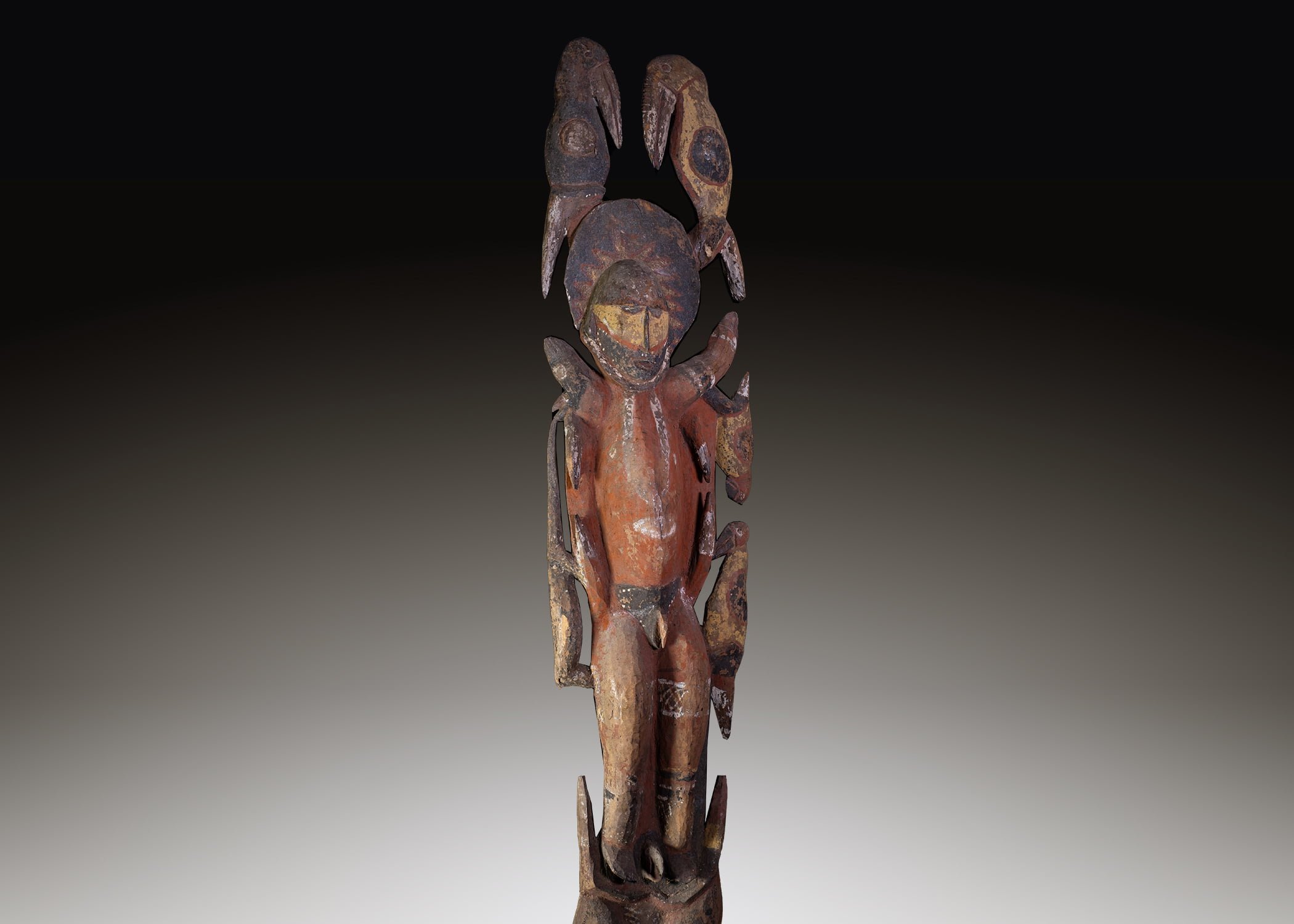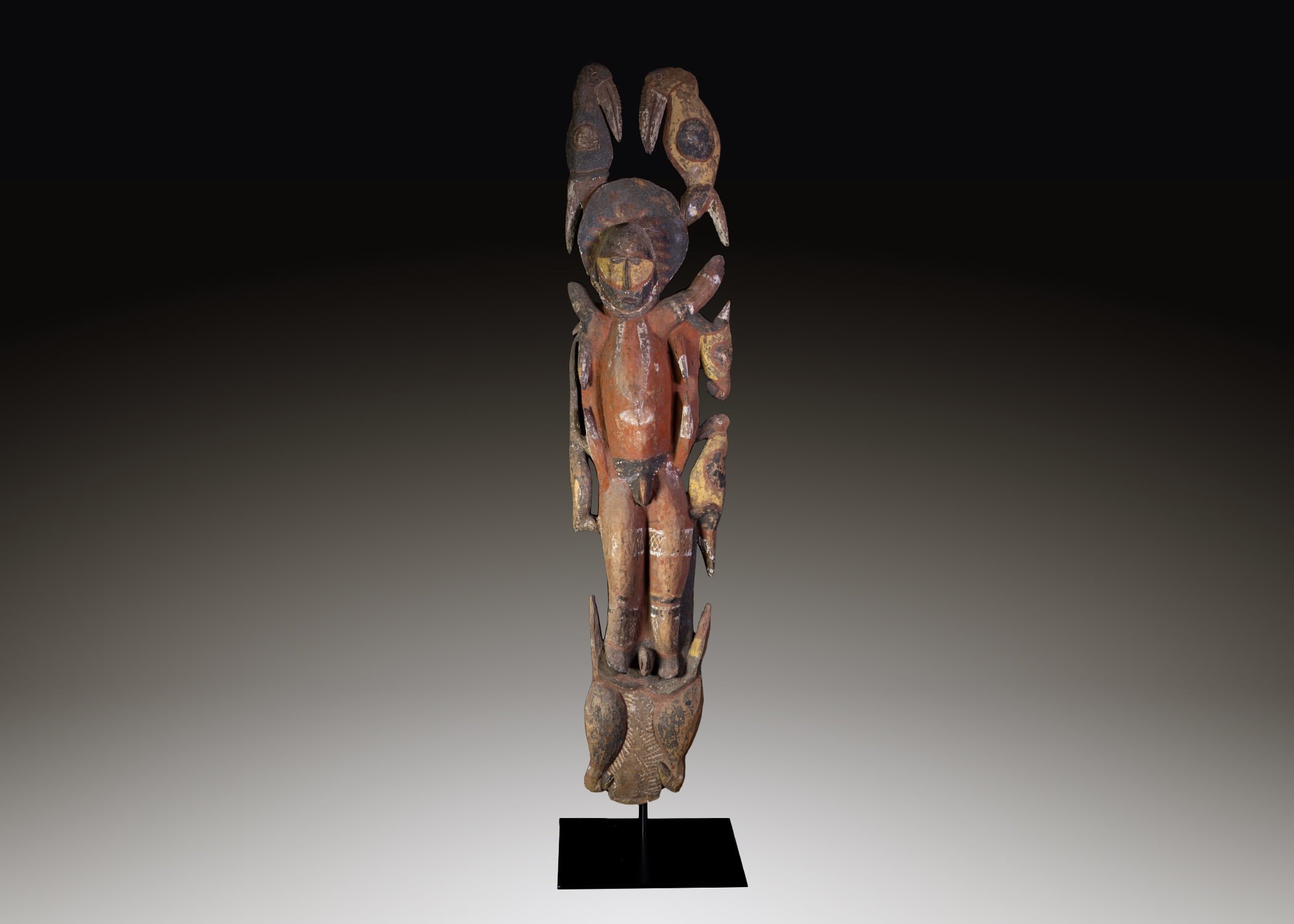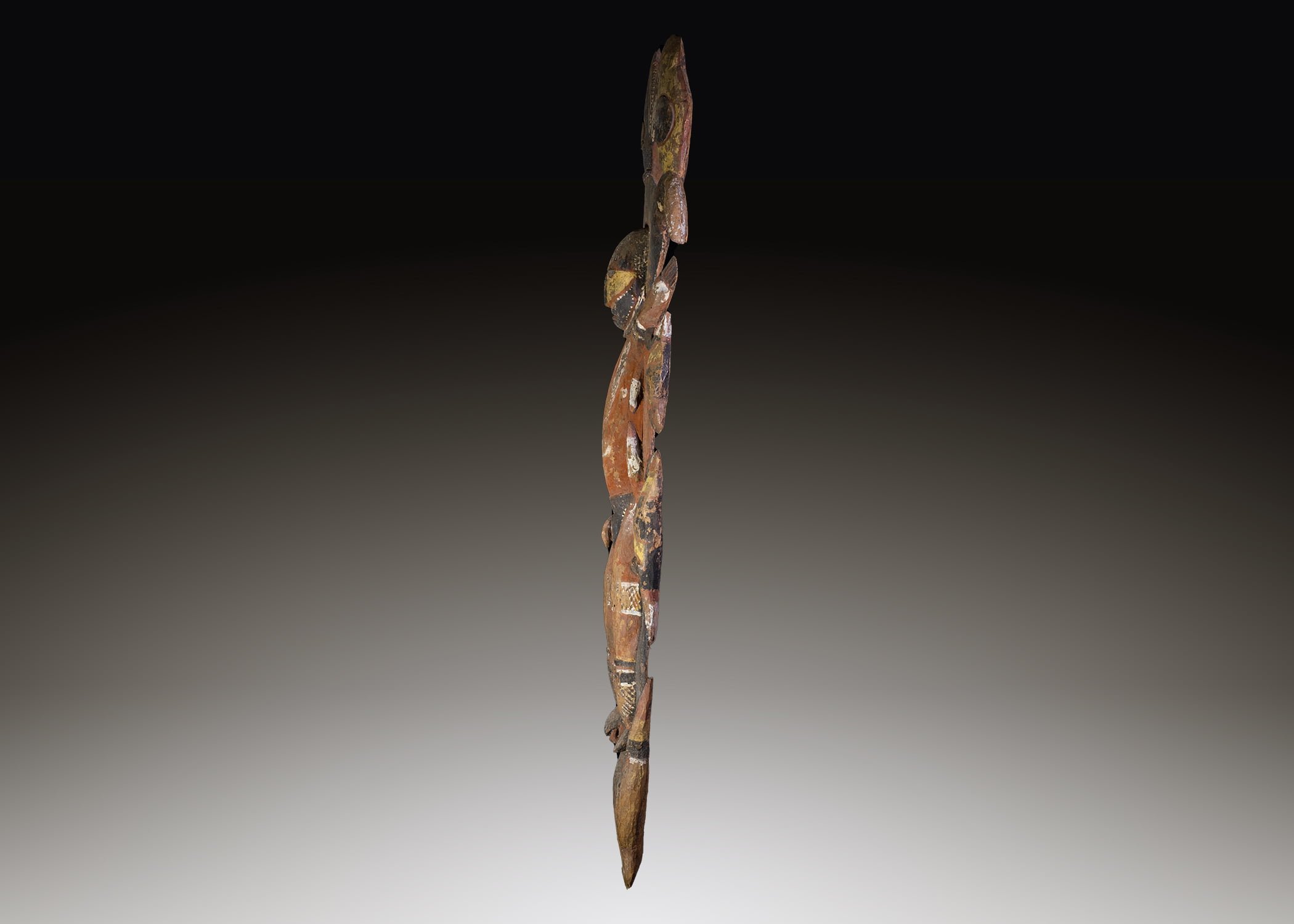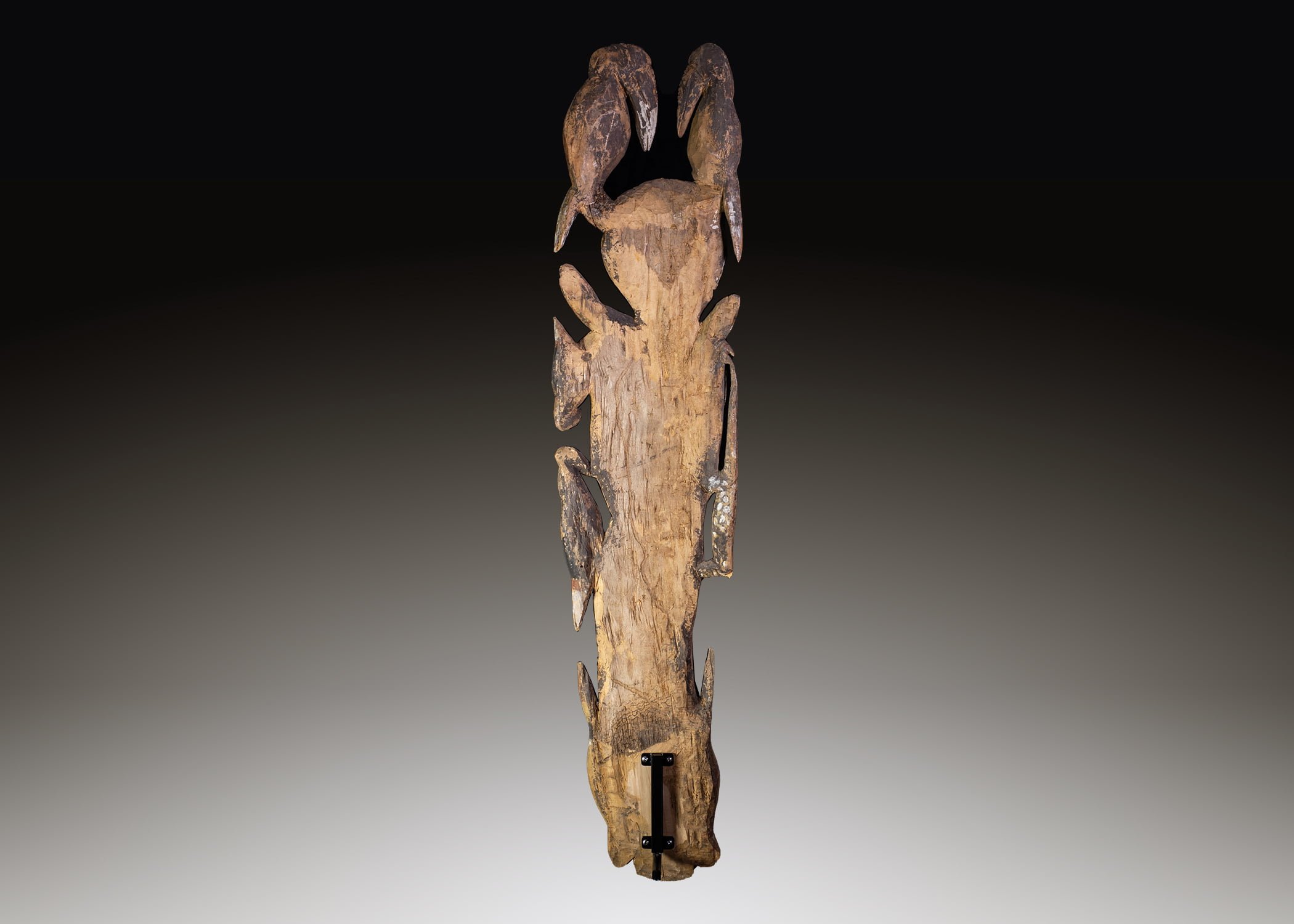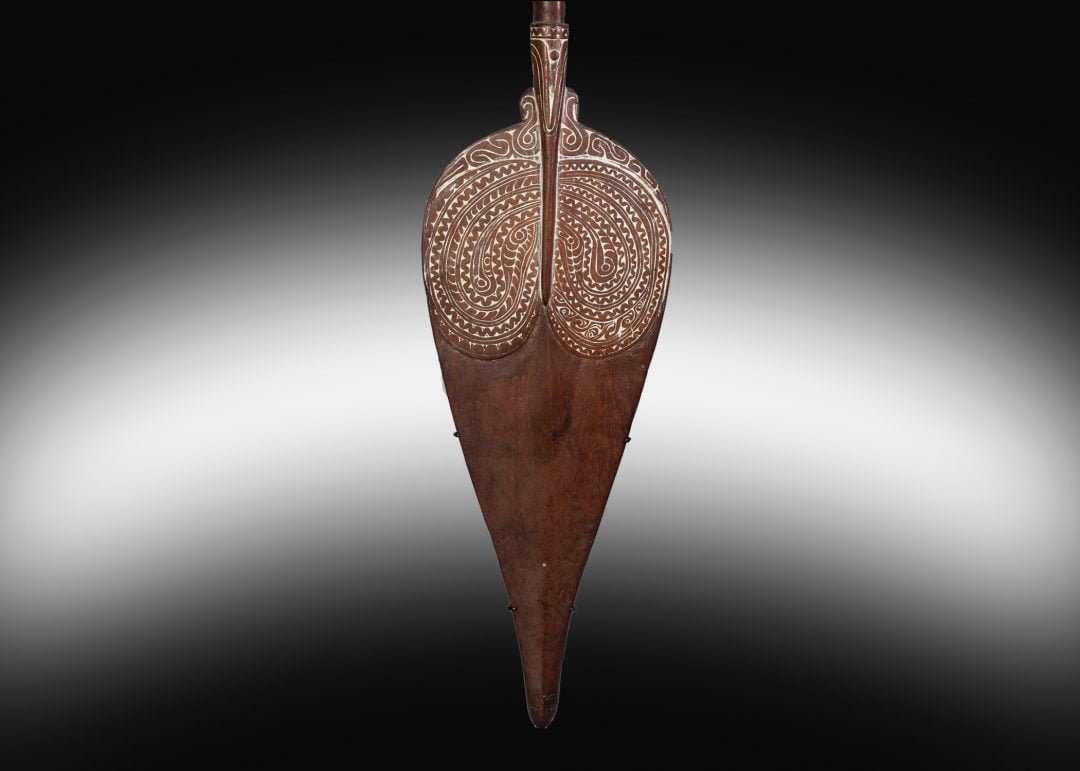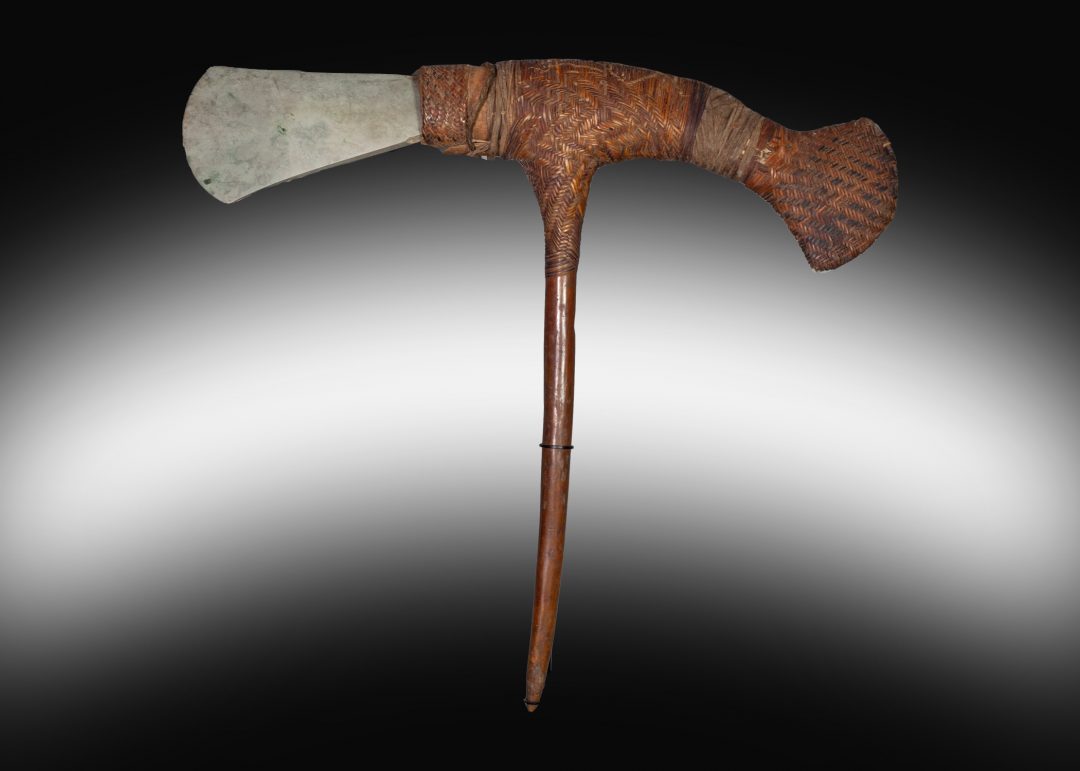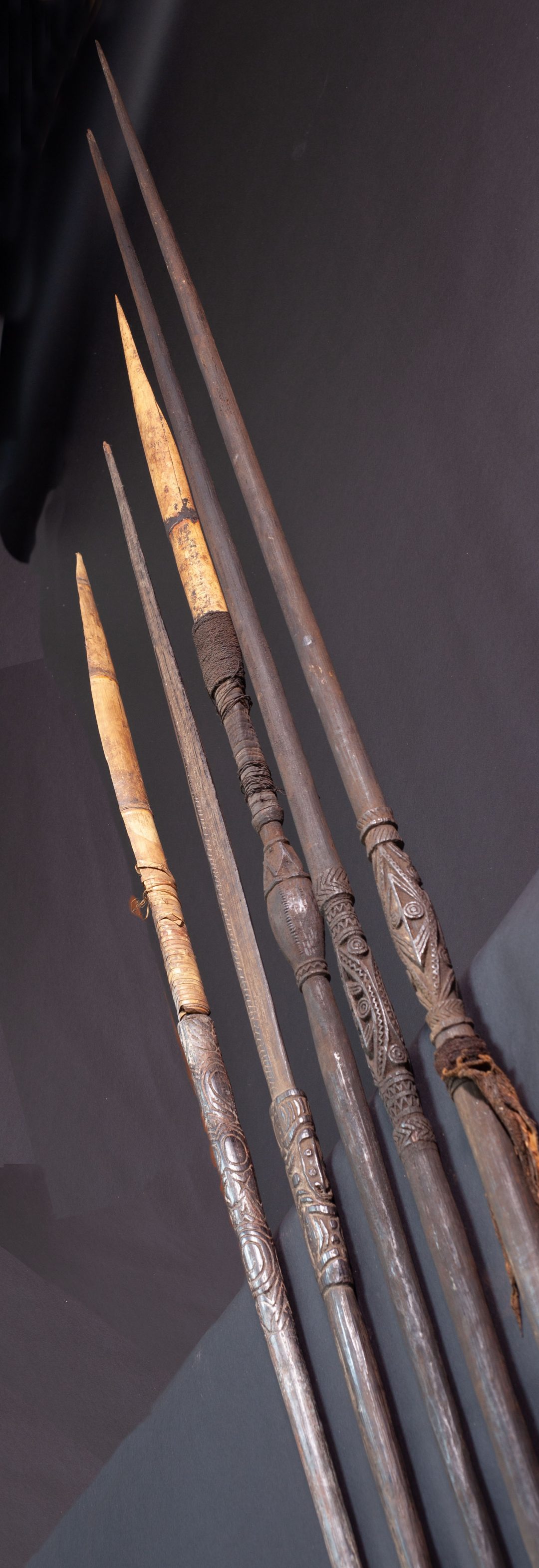Abelam Spirit Figure
-
TitleAbelam Spirit Figure
-
LocationMaprik district, East Sepik Province
-
Date1940-50s
- Size33cm (W) x 145cm (H)
-
Price$6,500.00
Sculptures like this early example from the Abelam depict important ancestors and clan founders whose function is to: strengthen the powers of the male initiated, to foster fertility of the fields and to guard from illnesses and misfortune. They are carved from a single piece of wood and painted bright in ochre colours. They are called ‘Nggwalndu’ (Nggwal=ancestor spirit) and are kept in the impressive ritual houses (haus tambaran). They play an important role in initiation rituals and must not be seen by women or children! The present ‘Nggwalndu sculpture’ is a perfect example of the art of the Abelam:
This old ancestor figure has two hornbills (clan totems) perched on his shoulders. There are four other birds on the sides and base of the carving. Note also the highly stylised cockatoo head positioned between the feet. On the left side of the figure is an animal which is missing its head from an old break. The back is smooth and devoid of colour, as these figures would have most likely hang on the walls of the men’s house. This ancestor figure demonstrates how important colour is in the art of the Abelam. Colour has ‘magical powers’ in Abelam culture.
This figure came from the Carl Shipman collection. Carl Shipman was an astute collector of Aboriginal and Oceanic material in the 1960s. He was also a self published author on the subject, parts of his collection are in the National Museum of Victoria and National Gallery of Australia, La Trobe University ethnographic collection and he also made a significant contributions to the Israel Museum , Jerusalem, Israel
Sculptures like this early example from the Abelam depict important ancestors and clan founders whose function is to: strengthen the powers of the male initiated, to foster fertility of the fields and to guard from illnesses and misfortune. They are carved from a single piece of wood and painted bright in ochre colours. They are called ‘Nggwalndu’ (Nggwal=ancestor spirit) and are kept in the impressive ritual houses (haus tambaran). They play an important role in initiation rituals and must not be seen by women or children! The present ‘Nggwalndu sculpture’ is a perfect example of the art of the Abelam:
This old ancestor figure has two hornbills (clan totems) perched on his shoulders. There are four other birds on the sides and base of the carving. Note also the highly stylised cockatoo head positioned between the feet. On the left side of the figure is an animal which is missing its head from an old break. The back is smooth and devoid of colour, as these figures would have most likely hang on the walls of the men’s house. This ancestor figure demonstrates how important colour is in the art of the Abelam. Colour has ‘magical powers’ in Abelam culture.
This figure came from the Carl Shipman collection. Carl Shipman was an astute collector of Aboriginal and Oceanic material in the 1960s. He was also a self published author on the subject, parts of his collection are in the National Museum of Victoria and National Gallery of Australia, La Trobe University ethnographic collection and he also made a significant contributions to the Israel Museum , Jerusalem, Israel
